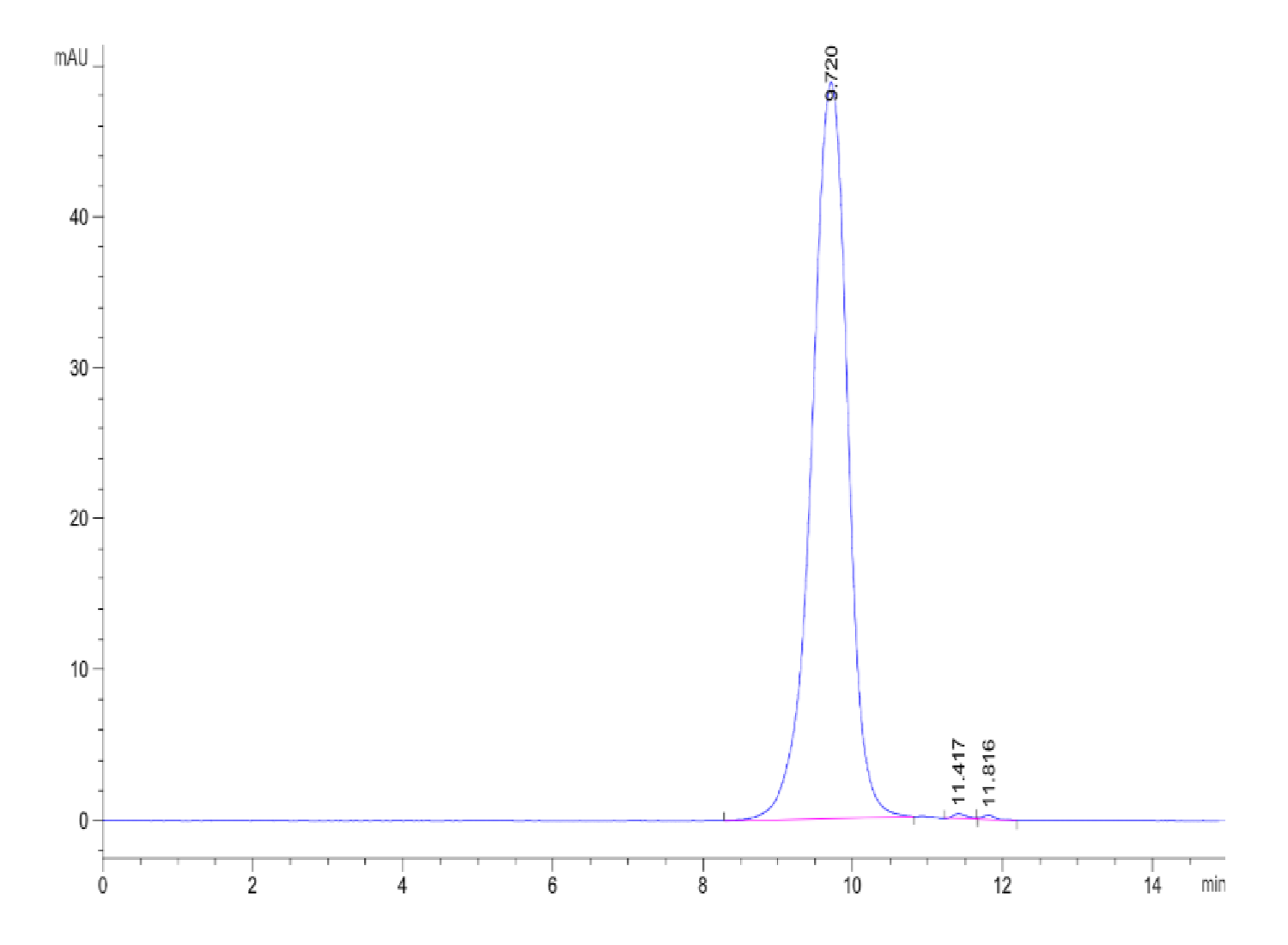| Weight | 1 lbs |
|---|---|
| Dimensions | 9 × 5 × 2 in |
| accession | P47871 |
| express system | HEK293 |
| product tag | C-His-Avi |
| purity | > 95% as determined by Tris-Bis PAGE;> 95% as determined by HPLC |
| background | The pancreatic hormone glucagon activates the glucagon receptor (GCGR), a class B seven-transmembrane G protein-coupled receptor that couples to the stimulatory heterotrimeric G protein and provokes PKA-dependent signaling cascades vital to hepatic glucose metabolism and islet insulin secretion. The GCGR expressed at the plasma membrane is constitutively ubiquitinated and upon agonist-activation, internalized GCGRs are deubiquitinated at early endosomes and recycled via Rab4-containing vesicles. |
| molecular weight | The protein has a predicted MW of 15.96 kDa. Due to glycosylation, the protein migrates to 30-50 kDa based on Tris-Bis PAGE result. |
| available size | 100 µg, 500 µg |
| endotoxin | Less than 1EU per μg by the LAL method. |
Human GCGR/Glucagon receptor Protein 2030
$345.00 – $1,150.00
Summary
- Expression: HEK293
- Pure: Yes (HPLC)
- Amino Acid Range: Ala26-Lys136
Human GCGR/Glucagon receptor Protein 2030
| protein |
|---|
| Size and concentration 100, 500µg and liquid |
| Form Liquid |
| Storage Instructions Valid for 12 months from date of receipt when stored at -80°C. Recommend to aliquot the protein into smaller quantities for optimal storage. Please minimize freeze-thaw cycles. |
| Storage buffer Shipped with dry ice. |
| Purity > 95% as determined by Tris-Bis PAGE |
| target relevance |
|---|
| The pancreatic hormone glucagon activates the glucagon receptor (GCGR), a class B seven-transmembrane G protein-coupled receptor that couples to the stimulatory heterotrimeric G protein and provokes PKA-dependent signaling cascades vital to hepatic glucose metabolism and islet insulin secretion. The GCGR expressed at the plasma membrane is constitutively ubiquitinated and upon agonist-activation, internalized GCGRs are deubiquitinated at early endosomes and recycled via Rab4-containing vesicles. |
| Protein names Glucagon receptor (GL-R) |
| Gene names GCGR,GCGR |
| Protein family G-protein coupled receptor 2 family |
| Mass 9606Da |
| Function G-protein coupled receptor for glucagon that plays a central role in the regulation of blood glucose levels and glucose homeostasis. Regulates the rate of hepatic glucose production by promoting glycogen hydrolysis and gluconeogenesis. Plays an important role in mediating the responses to fasting. Ligand binding causes a conformation change that triggers signaling via guanine nucleotide-binding proteins (G proteins) and modulates the activity of down-stream effectors, such as adenylate cyclase. Promotes activation of adenylate cyclase. Besides, plays a role in signaling via a phosphatidylinositol-calcium second messenger system. |
| Subellular location Cell membrane ; Multi-pass membrane protein. Note=Is rapidly internalized after ligand-binding. |
| Post-translational modification Ligand-binding promotes phosphorylation of serine residues in the C-terminal cytoplasmic domain. Phosphorylation is important for receptor endocytosis after ligand-binding. |
| Target Relevance information above includes information from UniProt accession: P47871 |
| The UniProt Consortium |
Data
 |
| The purity of Human GCGR is greater than 95% as determined by SEC-HPLC. |
 |
| Human GCGR on Tris-Bis PAGE under reduced condition. The purity is greater than 95%. |
Publications
Publications
| pmid | title | authors | citation |
|---|---|---|---|
| We haven't added any publications to our database yet. | |||
Protocols
| relevant to this product |
|---|
Documents
| # | ||
|---|---|---|
| Please enter your product and batch number here to retrieve product datasheet, SDS, and QC information. | ||














